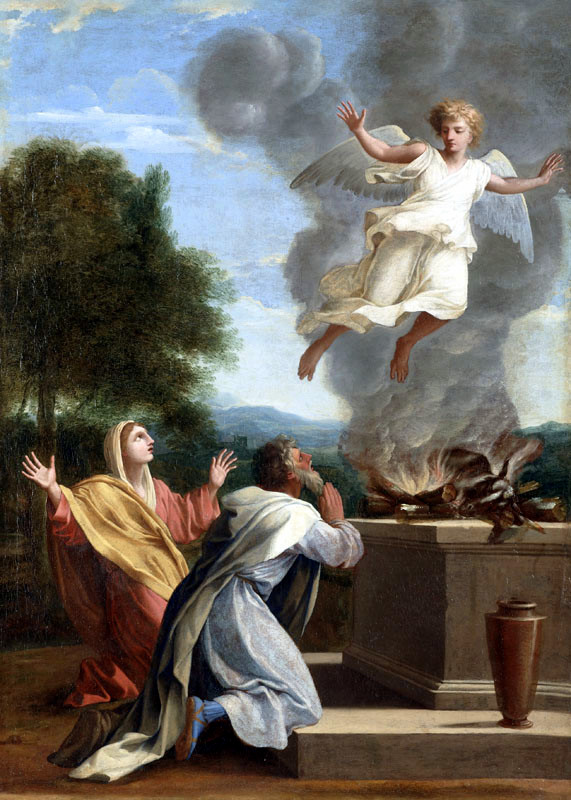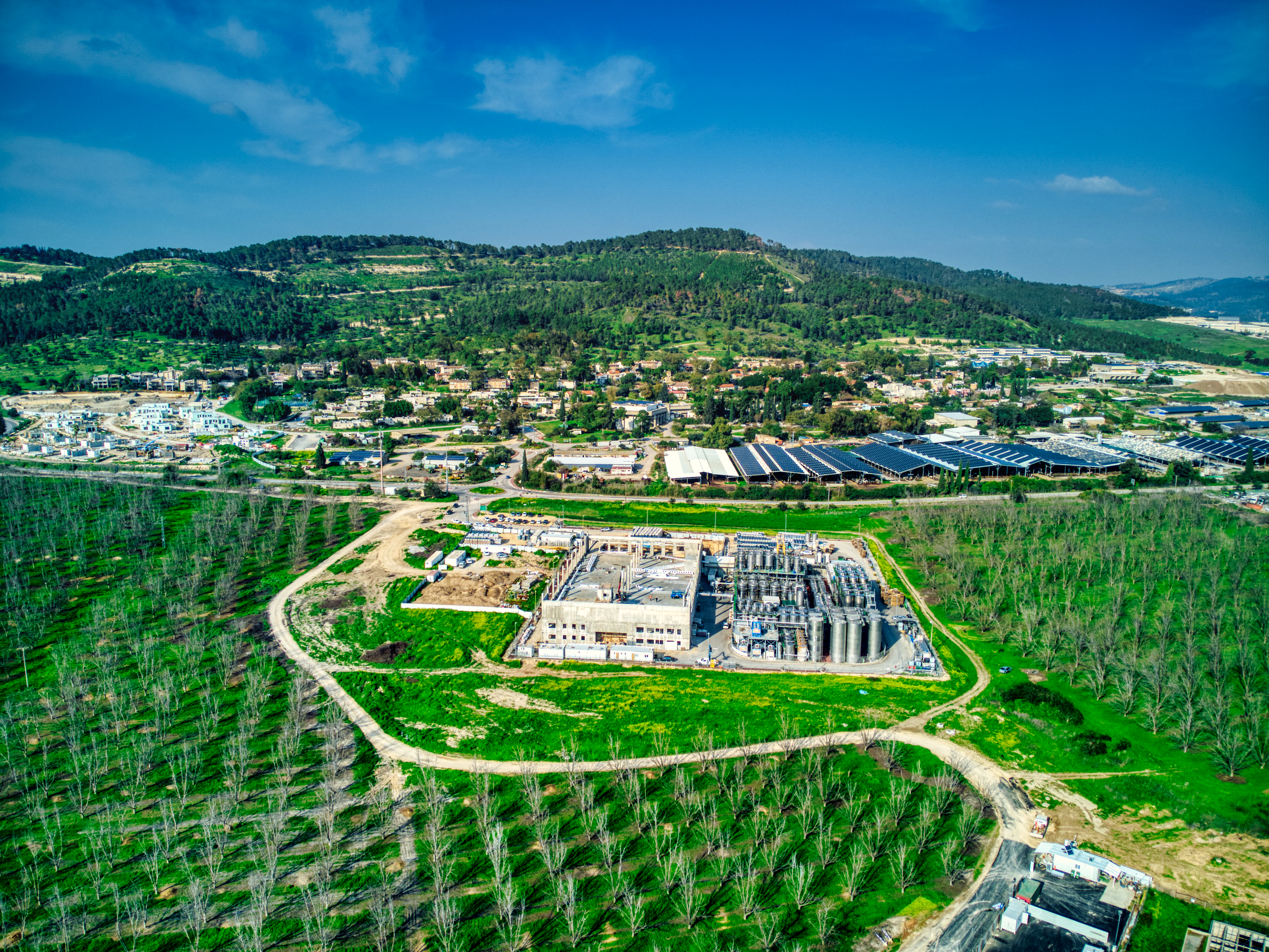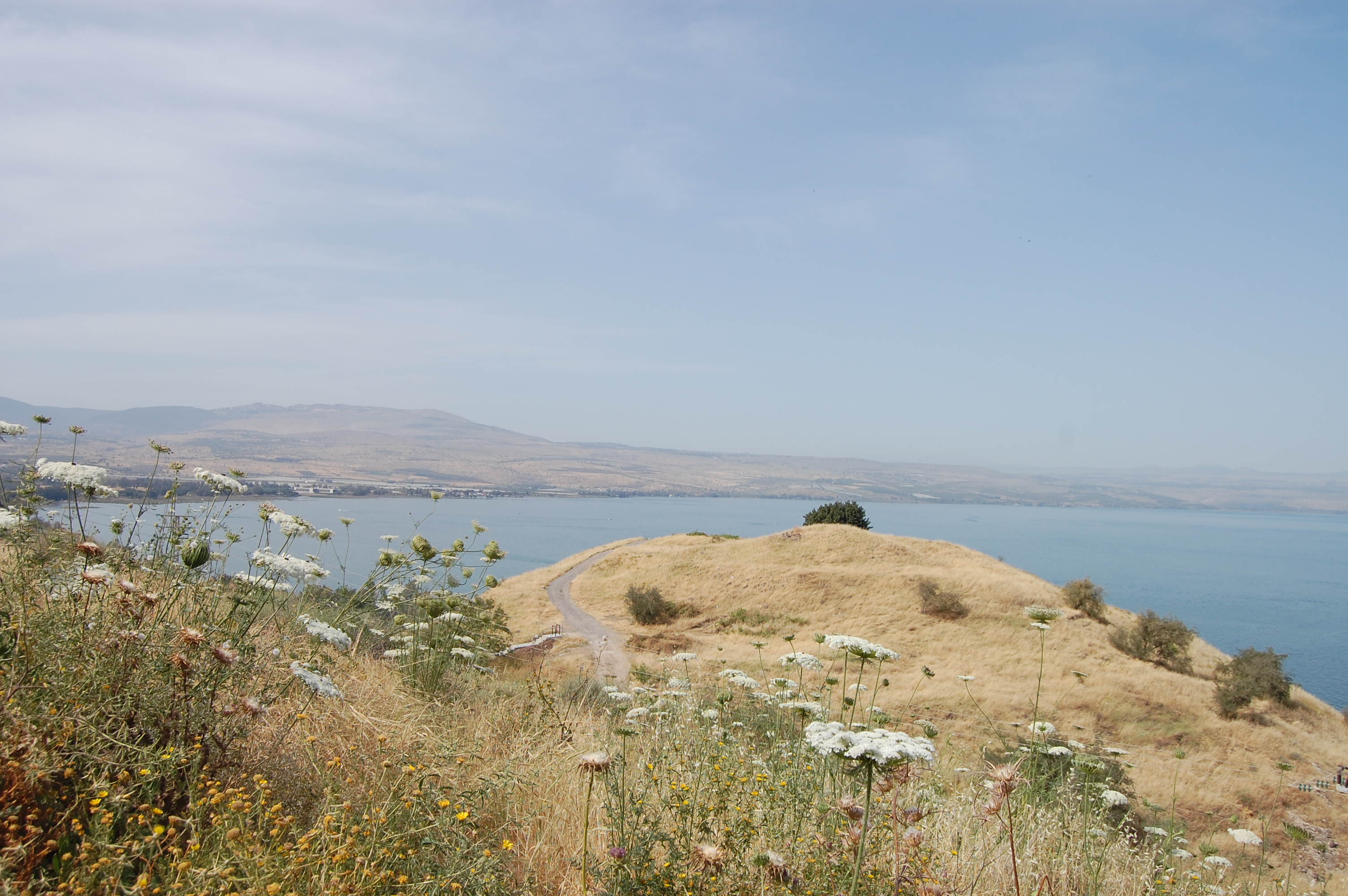|
Eshtaol
( he, אֶשְׁתָּאוֹל) is a moshav in central Israel, and a biblical location mentioned in the Books of Joshua and Judges and in the first Book of Chronicles. Located north of , it falls under the jurisdiction of Mateh Yehuda Regional Council. In , it had a population of . History Antiquity In 2013, archaeological excavations conducted by the Israel Antiquities Authority near discovered the oldest structure ever found in the Shfela region of the Judean Hills, dating back to the first permanent human settlement in the area some 10,000 years ago. Excavations at the site continued into 2014, led by A. Yaroshevich on behalf of the Israel Antiquities Authority. Biblical era was in the territory allotted to the Tribe of Dan (), and located on the border of the tribe of Judah. Although listed in as being a city in the plain, it is actually partly in the hill country, partly in the plain. According to the biblical narrative, Samson began to be agitated by the Spirit of God ... [...More Info...] [...Related Items...] OR: [Wikipedia] [Google] [Baidu] |
Route 38 (Israel)
Highway 38 is an arterial road in the low plains of Judea in Israel. It serves as the main access route to Beit Shemesh and as a main north–south route in the region. Along the route are many nature preserves and archeological sites. Route Highway 38 travels in a north-northeast direction as it winds through the western foothills of the Judaean Mountains from Highway 35 at Nehusha Junction near Beit Guvrin to Highway 1 at Sha'ar HaGai Interchange. Along many stretches, it follows small valleys formed by northward turns of westward streams emanating from the mountains to the east, notably, the Yoresh, Hakhlil, Yarmut and Kisalon Streams. Between the stream valleys and north of Eshtaol the road rises and falls as it crosses the many east–west ridges. History From biblical times the road is mentioned in as the route taken by the Philistines returning the Ark of the Covenant to the Israelites in Beth-Shemesh. During the Roman Era, the road was an important route as evidence ... [...More Info...] [...Related Items...] OR: [Wikipedia] [Google] [Baidu] |
Ishwa'
Ishwa' ( ar, إشوع) was a Palestinian village which was depopulated during the 1948 Arab-Israeli war. The village was located about 20 km west of Jerusalem, on the present location of Eshta'ol. In the 1931 British census of Palestine, Ishwa had a population of 468 in 126 houses. The village was occupied by the Israel Defense Forces (IDF) on July 16, 1948, in Operation Dani by the Harel Brigade. All of its inhabitants fled or were expelled. History Ishwa was an ancient village, situated at the foot of a hill. It is thought to have been established over the site of the Israelite city of Eshtaol, famous for the biblical story of Samson. It was known by that name during the Roman Empire era, when it fell within the administrative district of Eleutheropolis (Bayt Jibrin). However, Dayr Abu al-Qabus, located to the north has also been identified with Eshta'ol.Khalidi, 1992, p. 293 Ottoman era During the 16th century CE, settlement seems to have shifted to the northwest to Isl ... [...More Info...] [...Related Items...] OR: [Wikipedia] [Google] [Baidu] |
Islin
Islin ( ar, عسلين) was a Palestinian Arab village located 21 kilometers west of Jerusalem. The village had a population of 302 inhabitants and was depopulated during the 1948 Arab-Israeli war. It was occupied by Israeli forces, possibly from the Fourth Battalion of the Harel Brigade, on 18 July 1948 during Operation Dani, causing its inhabitants to leave. Eshtaol, a moshav, was built on the village's land. History In 1596, Islin appeared as ''Islit'' in Ottoman tax registers as being in the ''Nahiya'' of Ramla of the '' Liwa'' of Jaffa. It had a population of 14 Muslim households, an estimated 77 people, who paid a fixed tax-rate of 25% on agricultural products, including wheat, barley, and goats or beehives; a total of 4,700 akçe. In the later 1870s the place was uninhabited, with ruins of a village still visible, and with a Mukam. It was probably re-established at the beginning of the century.Khalidi, 1992, p. 295 British Mandate era In the 1922 census of Palestine ... [...More Info...] [...Related Items...] OR: [Wikipedia] [Google] [Baidu] |
Jewish National Fund
Jewish National Fund ( he, קֶרֶן קַיֶּימֶת לְיִשְׂרָאֵל, ''Keren Kayemet LeYisrael'', previously , ''Ha Fund HaLeumi'') was founded in 1901 to buy and develop land in Ottoman Syria (later Mandatory Palestine, and subsequently Israel and the Palestinian territories) for Jewish settlement. The JNF is a non-profit organization.Professor Alon Tal, The Mitrani Department of Desert Ecology, The Blaustein Institutes for Desert Research, Ben Gurion University of the Nege"NATIONAL REPORT OF ISRAEL, Years 2003-2005, TO THE UNITED NATIONS CONVENTION TO COMBAT DESERTIFICATION (UNCCD)"; State of Israel, July 2006 By 2007, it owned 13% of the total land in Israel. Since its inception, the JNF says it has planted over 240 million trees in Israel. It has also built 180 dams and reservoirs, developed of land and established more than 1,000 parks. In 2002, the JNF was awarded the Israel Prize for lifetime achievement and special contribution to society and the State of ... [...More Info...] [...Related Items...] OR: [Wikipedia] [Google] [Baidu] |
Samson
Samson (; , '' he, Šīmšōn, label= none'', "man of the sun") was the last of the judges of the ancient Israelites mentioned in the Book of Judges (chapters 13 to 16) and one of the last leaders who "judged" Israel before the institution of the monarchy. He is sometimes considered as an Israelite version of the popular Near Eastern folk hero also embodied by the Sumerian Enkidu and the Greek Heracles. The biblical account states that Samson was a Nazirite, and that he was given immense strength to aid him against his enemies and allow him to perform superhuman feats, including slaying a lion with his bare hands and massacring an entire army of Philistines using only the jawbone of a donkey. However, if Samson's long hair were cut, then his Nazirite vow would be violated and he would lose his strength. Samson is betrayed by his lover Delilah, who, sent by the Philistines officials to entice him, orders a servant to cut his hair while he is sleeping and turns him over to hi ... [...More Info...] [...Related Items...] OR: [Wikipedia] [Google] [Baidu] |
Tzora
Tzora ( he, צָרְעָה) is a kibbutz in central Israel. Located about 20 km from Jerusalem, near the city of Beit Shemesh, it falls under the jurisdiction of Mateh Yehuda Regional Council. In it had a population of . Etymology The kibbutz is named for the biblical village of Tzora, which may have been a Canaanite town. The name was taken from the Biblical Book of Judges (13:25): "And the spirit of the Lord began to move him (Samson) at times in the camp of Dan between Zorah and Eshtaol." The kibbutz's name is also similar to, and is related to that of the nearby and depopulated Palestinian village of Sar'a. History Biblical era Tzora is located about 2 km south-west of Tel Tzora, which is where the Palestinian village of Sar'a stood until it was depopulated during the 1948 war. Tel Tzora is the likely location of the biblical village of Zorah. Second Temple era A ritual bath dating back to the Second Temple Period was discovered near Tzora kibbutz during an archa ... [...More Info...] [...Related Items...] OR: [Wikipedia] [Google] [Baidu] |
Mateh Yehuda Regional Council
Mateh Yehuda Regional Council ( he, מועצה אזורית מטה יהודה, ''Mo'atza Azorit Mateh Yehuda'', ar, مجلس إقليمي ماتيه يهودا ) is a regional council in the Jerusalem District of Israel. In 2008 it was home to 36,200 people. The name of the regional council stems from the fact that its territory was part of the land allotted to the Tribe of Judah, according to the Bible. Places and communities The regional council administers moshavim, kibbutzim, Arab villages and other rural settlements in the Jerusalem corridor, north and south of the Jerusalem-Tel Aviv highway, from Jerusalem in the southeast to Latrun in the northwest, and down to the area of Beit Shemesh ( Ha'ela Valley) in the south. The settlements vary greatly in their character. There are religious, secular and mixed Jewish communities, two Arab communities, and the only mixed Arab-Jewish village in Israel - Neve Shalom. Many of the Jewish communities in the Mateh Yehuda district we ... [...More Info...] [...Related Items...] OR: [Wikipedia] [Google] [Baidu] |
Mahanehdan
This is a list of places mentioned in the Bible, which do not have their own Wikipedia articles. See also the list of biblical places for locations which do have their own article. A Abana Abana, according to 2 Kings 5:12, was one of the "rivers of Damascus", along with the Pharpar river. Abdon Abdon was a Levitical city in Asher allocated to the Gershonites according to Joshua 21:30 and 1 Chronicles 6:74. Abel-Shittim Abel-Shittim, the last Israelite encampment before crossing into the Promised Land, is identified by Josephus with Abila in Peraea, probably the site of modern Tell el-Hammam in Jordan. Adam Adam was a location which, according to Joshua 3:16, was along the Jordan River, near Zarethan. According to Cheyne and Black, it may be a scribal error for "Adamah". Adadah Adadah is the name of a town mentioned in Joshua 15:22, in a list of towns inside the territory of the Tribe of Judah. The name "Adadah" appears nowhere else in the Bible."Adadah", in According to t ... [...More Info...] [...Related Items...] OR: [Wikipedia] [Google] [Baidu] |
1948 Arab-Israeli War
Events January * January 1 ** The General Agreement on Tariffs and Trade (GATT) is inaugurated. ** The Constitution of New Jersey (later subject to amendment) goes into effect. ** The railways of Britain are nationalized, to form British Railways. * January 4 – Burma gains its independence from the United Kingdom, becoming an independent republic, named the ''Union of Burma'', with Sao Shwe Thaik as its first President, and U Nu its first Prime Minister. * January 5 ** Warner Brothers shows the first color newsreel (''Tournament of Roses Parade'' and the ''Rose Bowl Game''). ** The first Kinsey Reports, Kinsey Report, ''Sexual Behavior in the Human Male'', is published in the United States. * January 7 – Mantell UFO incident: Kentucky Air National Guard pilot Thomas Mantell crashes while in pursuit of an unidentified flying object. * January 12 – Mahatma Gandhi begins his fast-unto-death in Delhi, to stop communal violence during the Partition of India. * ... [...More Info...] [...Related Items...] OR: [Wikipedia] [Google] [Baidu] |
Jerusalem
Jerusalem (; he, יְרוּשָׁלַיִם ; ar, القُدس ) (combining the Biblical and common usage Arabic names); grc, Ἱερουσαλήμ/Ἰεροσόλυμα, Hierousalḗm/Hierosóluma; hy, Երուսաղեմ, Erusałēm. is a city in Western Asia. Situated on a plateau in the Judaean Mountains between the Mediterranean Sea, Mediterranean and the Dead Sea, it is one of the List of oldest continuously inhabited cities, oldest cities in the world and is considered to be a holy city for the three major Abrahamic religions: Judaism, Christianity, and Islam. Both Israelis and Palestinians claim Jerusalem as their Capital city, capital, as Israel maintains its primary governmental institutions there and the State of Palestine ultimately foresees it as its seat of power. Because of this dispute, Status of Jerusalem, neither claim is widely recognized internationally. Throughout History of Jerusalem, its long history, Jerusalem has been destroyed at least twice, Sie ... [...More Info...] [...Related Items...] OR: [Wikipedia] [Google] [Baidu] |
Aliyah
Aliyah (, ; he, עֲלִיָּה ''ʿălīyyā'', ) is the immigration of Jews from Jewish diaspora, the diaspora to, historically, the geographical Land of Israel, which is in the modern era chiefly represented by the Israel, State of Israel. Traditionally described as "the act of going up" (towards the Jerusalem in Judaism, Jewish holy city of Jerusalem), moving to the Land of Israel or "making aliyah" is one of the most basic tenets of Zionism. The opposite action—emigration by Jews from the Land of Israel—is referred to in the Hebrew language as ''yerida'' (). The Law of Return that was passed by the Knesset, Israeli parliament in 1950 gives all diaspora Jews, as well as their children and grandchildren, the right to relocate to Israel and acquire Israeli citizenship on the basis of connecting to their Jewish identity. For much of Jewish history, their history, most Jews have lived in the diaspora outside of the Land of Israel due to Jewish military history, various hi ... [...More Info...] [...Related Items...] OR: [Wikipedia] [Google] [Baidu] |







